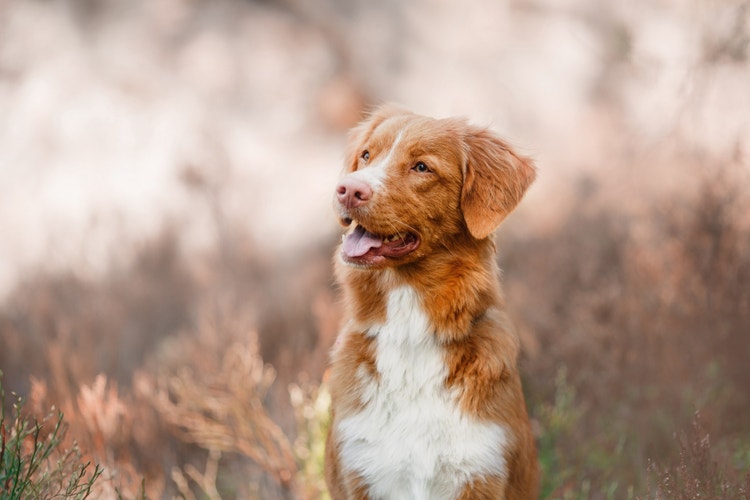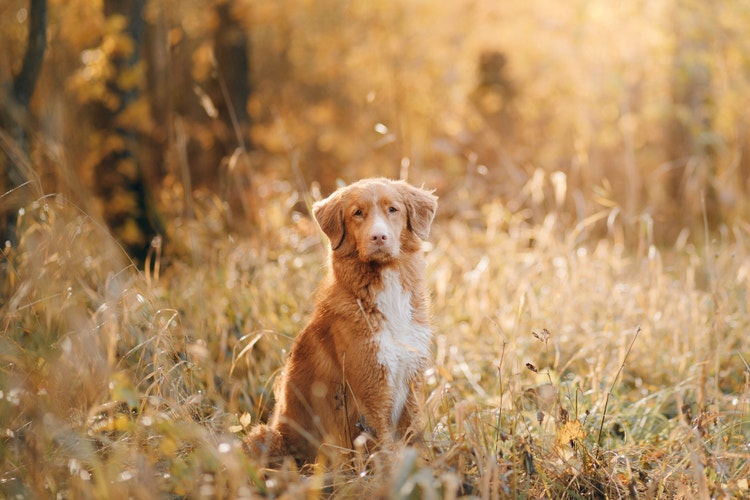

Nova Scotia Duck Tolling Retriever


Where Are Nova Scotia Duck Tolling Retrievers From?
This breed originated in Nova Scotia and was bred in the early 1900s to lure ducks and other waterfowl to the water’s edge and into shooting range. They are known for their agility, which makes them perfect for canine competition.
Their exact breeding origins are not well known, but it is believed they can be traced back to Spaniels, Setters, and Collies. They were initially named the Little River Duck Dog, and were briefly known as the Yarmouth Toller in the 1950s. The name was changed when the Canadian Kennel Club registered the breed.
Today, they are bred for retrieving, hunting, competition, and family companionship. They were accepted by the American Kennel Club in 2003 as a member of the Sporting Group.
Caring for a Nova Scotia Duck Tolling Retriever
What Kind of Diet Does a Nova Scotia Duck Tolling Retriever Need?
What Kind of Diet Does a Nova Scotia Duck Tolling Retriever Need?
Two meals a day of a high-quality dry food is ideal for the Toller. Puppy diets should be fed for the first 12 months to ensure proper growth.
How Much Grooming Does a Nova Scotia Duck Tolling Retriever Need?
How Much Grooming Does a Nova Scotia Duck Tolling Retriever Need?
Tollers require weekly brushing to keep their medium-length hair coat clean and shiny. Brushing should be done daily during seasonal shedding, which will prevent matting and knotting, especially around the ears and the feathery fur on the legs. The fur in between the toes tends to grow continuously and will need to be trimmed every couple of months to prevent slipping on hard surfaces.
Bathing should be done as needed, especially when they get dirty.
Are Nova Scotia Duck Tolling Retrievers Healthy?
Are Nova Scotia Duck Tolling Retrievers Healthy?
The Nova Scotia Duck Tolling Retriever is a relatively healthy breed with very few inherited diseases.
Addison’s disease is an autoimmune disorder common for the breed. This is the result of the adrenal glands not producing enough cortisol, which is a hormone that stimulates eating and manages stress.
An insufficient amount of this hormone can be life-threatening without treatment, making it imperative that yearly blood work is done to screen for this condition.
Tollers have an average life expectancy of about 12 to 14 years.
Nova Scotia Duck Tolling Retrievers are predisposed to: autoimmune disorders, Addison’s disease, hypothyroidism, hip dysplasia, and progressive retinal atrophy.
Pet insurance can be a safety net for you and your pet,
helping your pet care budget go further.
Get a free quote from PetPartners today.
Underwritten by Independence American Insurance Company Get Your Quote
How Much Training Does a Toller Dog Need?
How Much Training Does a Toller Dog Need?
Tollers are an intelligent breed, but can be easily distracted, so they will require a firm, kind, and consistent trainer. Like most dogs, they are food motivated, making positive reinforcement training the best method.
Proper socialization should be started between 6 and 8 weeks of age.
How Much Exercise Do Tolling Retrievers Need?
How Much Exercise Do Tolling Retrievers Need?
Tollers need lots of exercise and activity to keep them out of trouble, as they tend to get bored.
They will require two to three long and briskly-paced walks each day, as well as an hour of play (fetch is preferable).
What Are the Physical Characteristics of a Nova Scotia Duck Tolling Retriever?
Nova Scotia Duck Tolling Retriever Facts
Other Breeds to Explore
References
- Morris, Desmond. Dogs: The Ultimate Dictionary of Over 1,000 Dog Breeds. Trafalgar Square, 2002.
- Wilcox, Bonnie and Chris Walkowicz. The Atlas of Dog Breeds of the World. T.F.H Publications, Inc., 1995.


